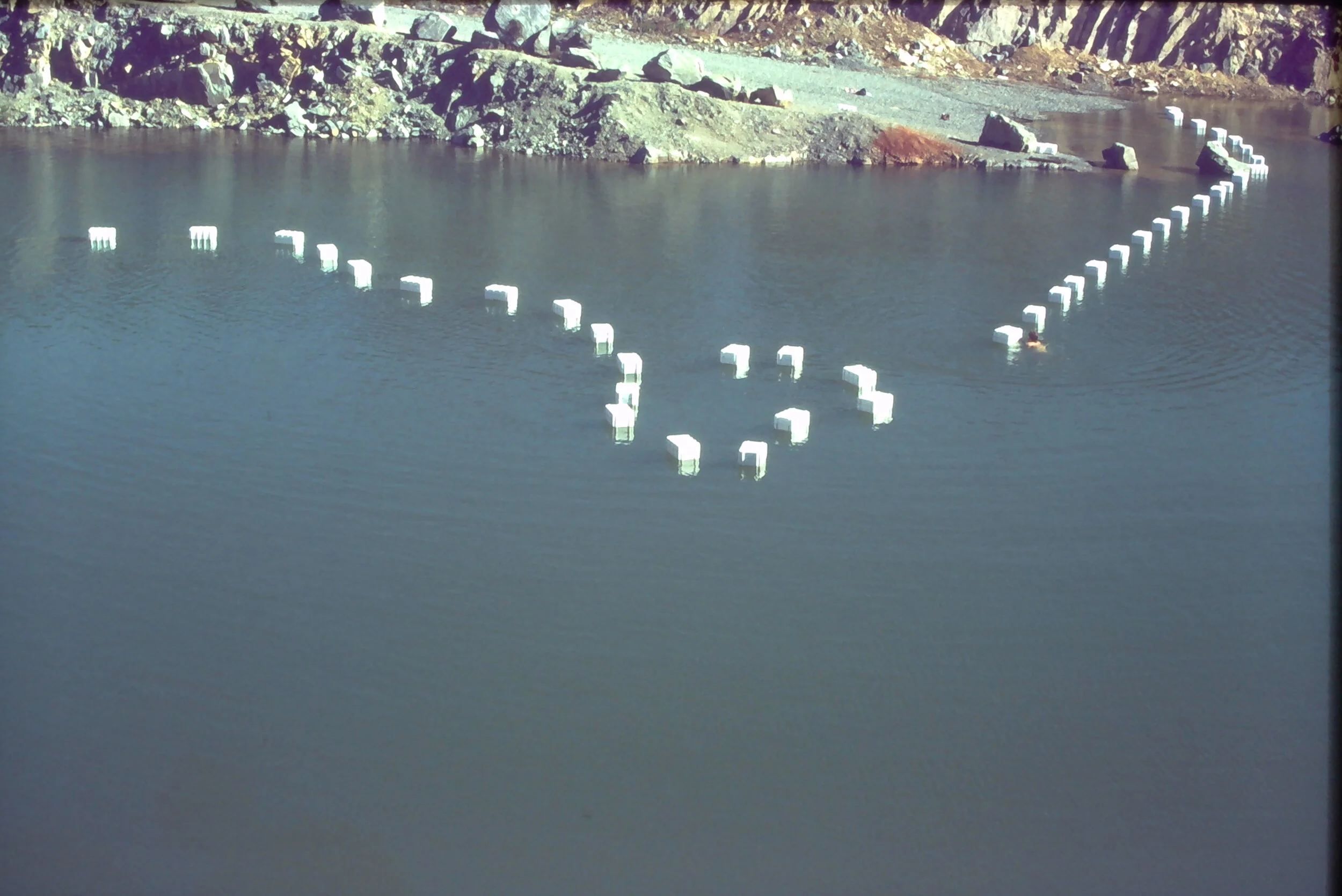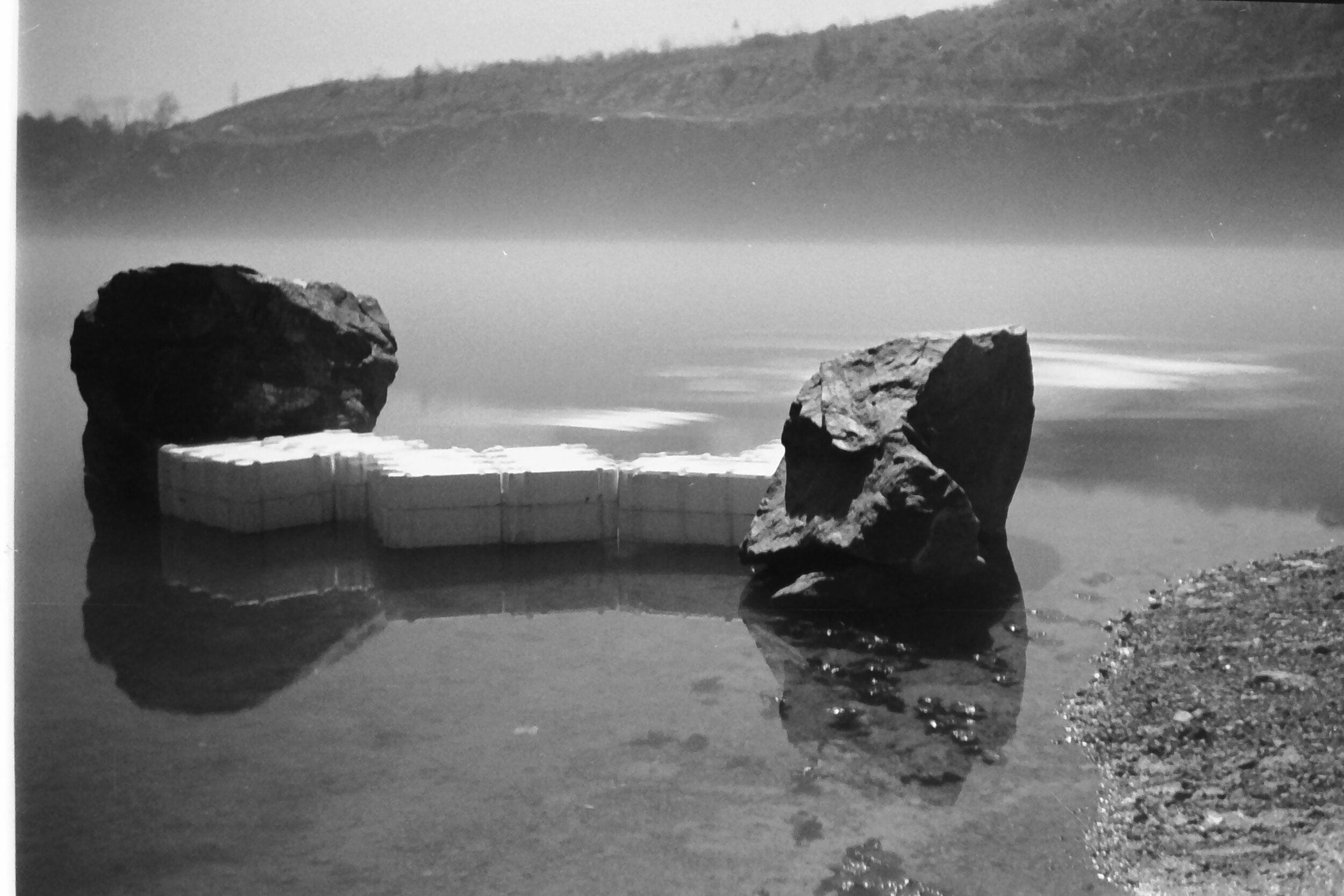
Forty Boxes 1975
Early November 1975. I’ve just turned twenty-two. I’m nearly naked beside a body of deep, clear water near Chapel Hill, NC.
On the shore of the quarry are forty Styrofoam microscope boxes I’d scavenged from behind a science building on the UNC campus. My idea is to string these boxes together with something imperceptible so they are connected to each other but not visibly so and then to exploit the inherent property of Styrofoam, which is ninety-five percent air, and float them in a body of water, allowing the wind to blow them into different configurations. I believe this is an artwork about the immanence of the natural world.
I stick my toe in the clear water and feel the gooseflesh prickle my thigh. I brace myself and wade into the water, the stones and the cold instantly making my feet ache. Holding the first white box to my chest, I frog kick across the bracing water as Ellen feeds the other boxes into the water one by one behind me. Richard is on the cliffs with his camera. I think the random action of the breeze will create patterns that will somehow be more authentic, more evocative, than the patterns I might make consciously. Richard begins documenting the event with color slides. The group of forty boxes trails behind me across the entire quarry, a slight breeze bending the line into an exquisite arc. I swim back to shore and pick up my own camera and hustle to take a series of black and white photos of the resulting combinations and compositions.
As a young artist, I abdicate control to the natural world. Yes, I expect the lightness of the Styrofoam and the soft breeze in the quarry will conspire to create beautiful or interesting compositions, but my real point is the beauty of the idea: in most of what we do, the natural world should call the shots. Forty-five years later, coming on the cache of slides documenting this day, I see something else. I see a critique of the art distribution system –– the accusation that it is nothing more than a tool of the wealthy, let’s see you try to sell this! which of course, is inextricably tied up with the critique of the ownership culture in general. Beyond this, I see the inkling of an idea there might be another paradigm, one where art is not owned. Surprisingly, I also see a concept that has been deeply important to my art practice for decades, the heartbreaking elegance of imperfection and transience, the patina of degradation. But it’s this young man whose insistence on actually living one’s life as a work of art that kills me.
In 1975, Forty Boxes was a transient and time-based piece, but only three viewers experienced it in person; the artwork presented as documentation was exhibited only once as black and white photos, seen by a dozen classmates. I failed to ask myself at the time whether my radical idea had influenced anyone, or had even reached an audience. Maybe back then I would have said I was simply in training, or maybe I hoped for a more illustrious future for it. With luck it might now be locked away in the warehouse of some art collector. In 1975 there was no other paradigm.



